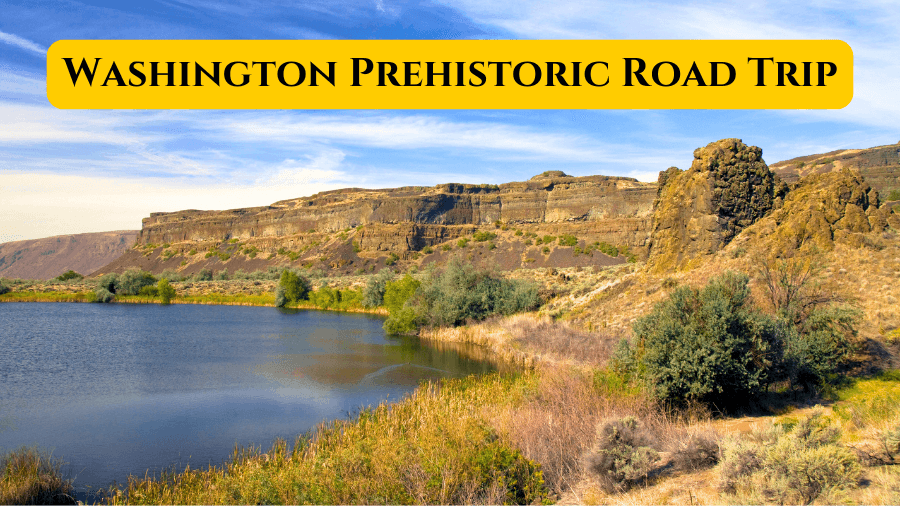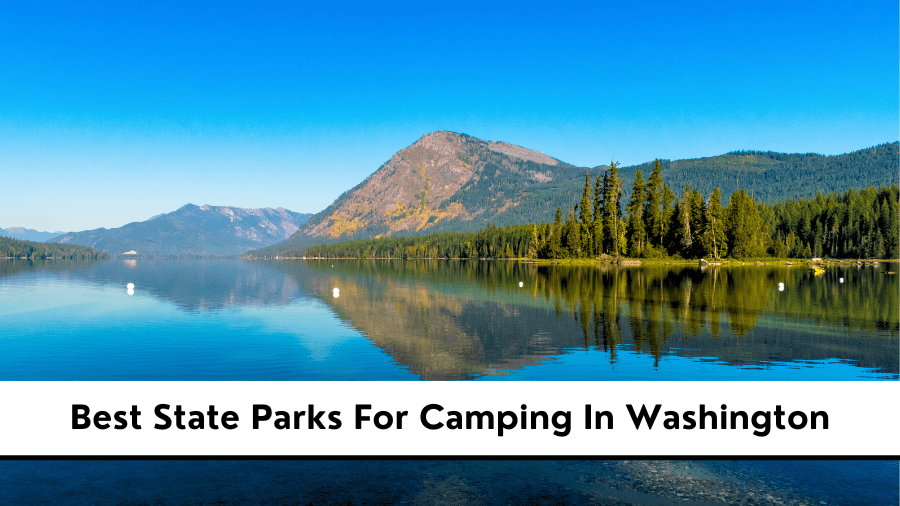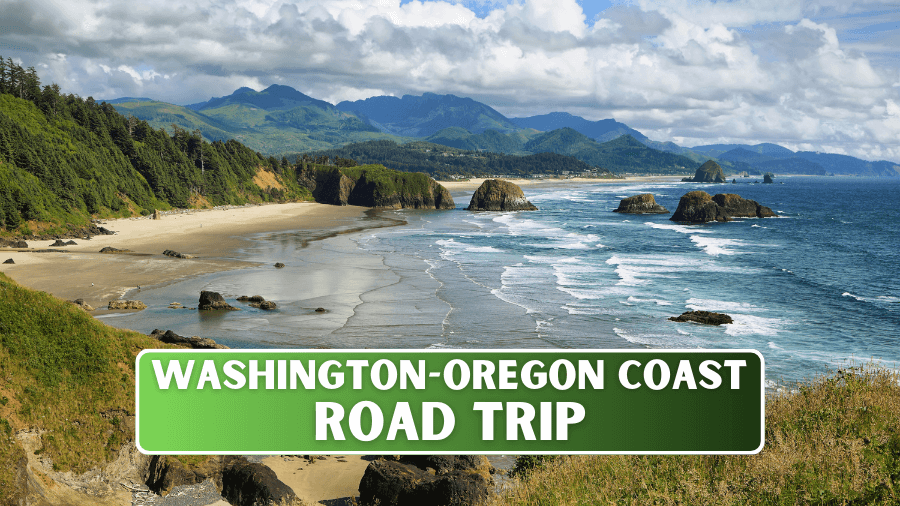Washington is filled with ancient secrets hiding in plain sight and this prehistoric sites road trip takes you to all of the best spots that you absolutely cannot miss.
We’re talking dinosaur bones, mammoth skulls, petrified trees, and fossils so detailed you can trace the veins in the leaves.
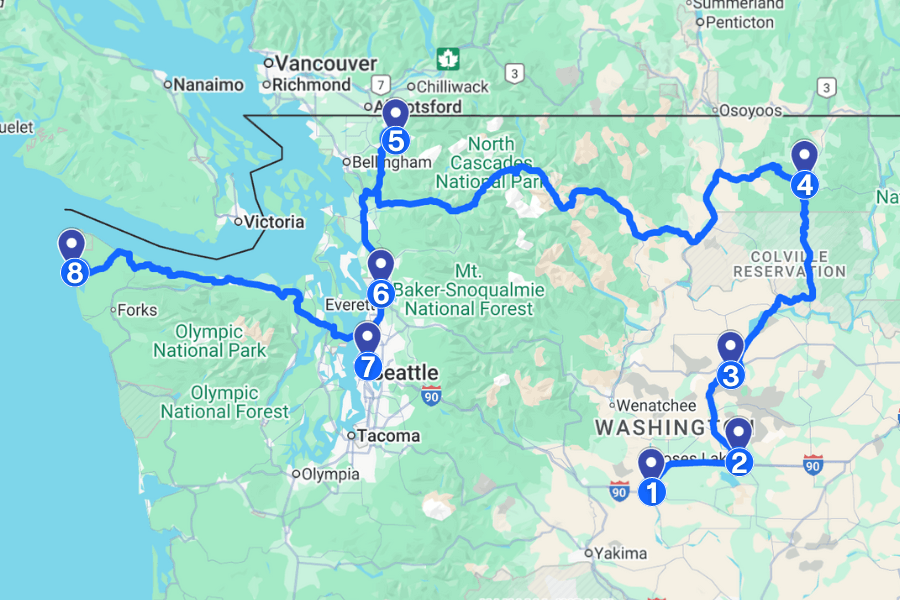
From dry waterfalls carved by mega-floods to ancient village sites frozen in time, every stop on this road trip feels like stepping into a time machine.
Get ready to explore the wildest, weirdest, most mind-blowing prehistoric spots Washington has to offer.
1. Ginkgo Petrified Forest State Park, Vantage
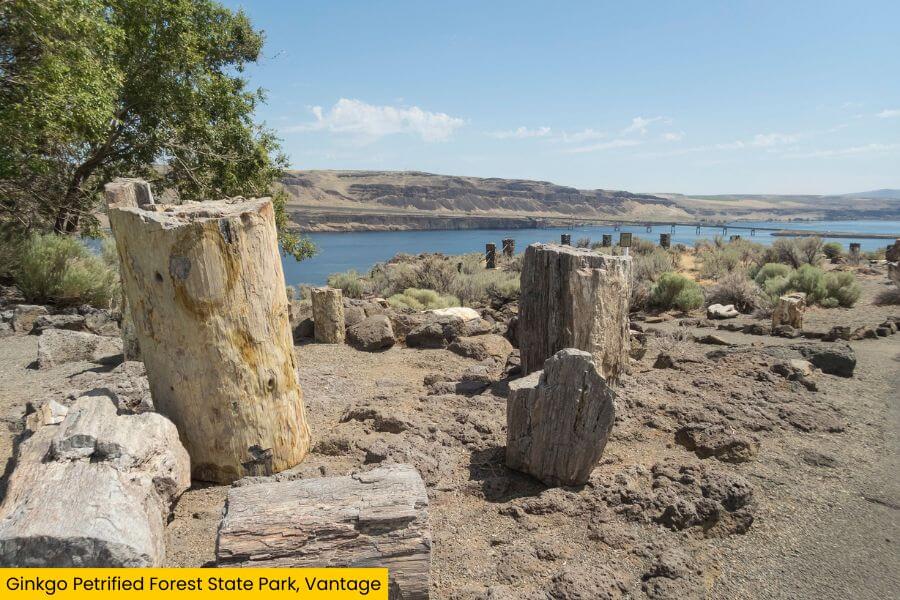
Located just off I-90 near the town of Vantage, Ginkgo Petrified Forest State Park is home to ancient tree fossils over 15 million years old.
This spot is famous for having one of the world’s most diverse petrified wood collections, with more than 40 species of fossilized trees in the area.
You can check out giant chunks of petrified logs, hike the 1.25-mile Trees of Stone Interpretive Trail, and even spot petroglyphs carved by the Wanapum tribe.
The coolest part?
These trees were buried by lava during ancient volcanic eruptions and slowly replaced by minerals over millions of years.
That means you’re walking through an actual prehistoric lava graveyard!
2. Moses Lake Museum & Art Center, Moses Lake
Continue east for about 45 minutes, and you’ll land in Moses Lake, where the Moses Lake Museum & Art Center makes a perfect pit stop.
This bright and modern museum is free to visit, with exhibits that explore the region’s Ice Age floods and fascinating geological history.
You’ll also discover real fossils and learn how massive floods and shifting landscapes shaped the Columbia Basin.
With rotating exhibits and local artifacts, the museum brings the prehistoric past of this area vividly to life.
3. Dry Falls, Sun Lakes-Dry Falls State Park
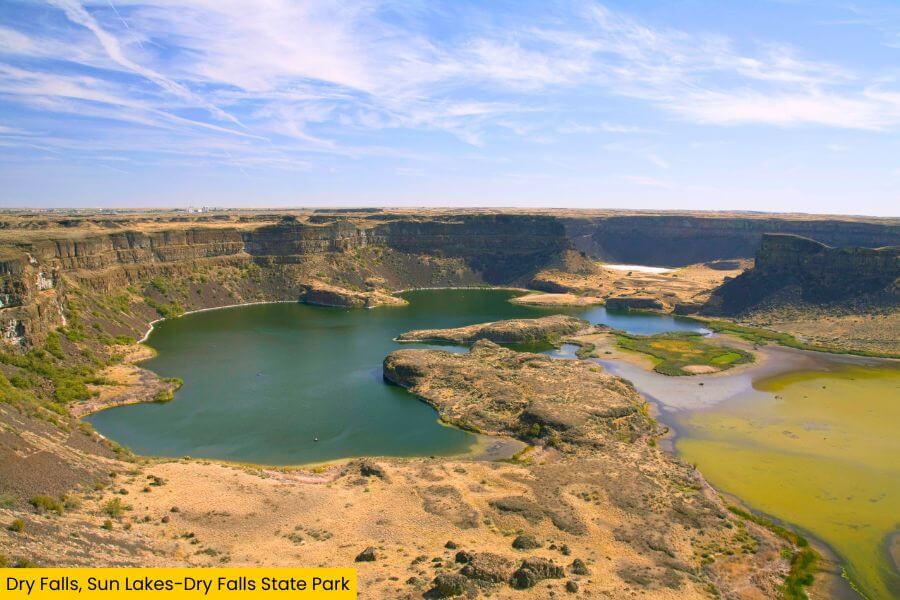
Next up is Dry Falls inside Sun Lakes-Dry Falls State Park, where high cliffs show where the world’s biggest waterfall once flowed.
We’re talking about a massive prehistoric waterfall, 400 feet tall and 3.5 miles wide, that once roared with more water than Niagara Falls.
It formed at the end of the last Ice Age, when floods from Glacial Lake Missoula carved canyons across eastern Washington, leaving this stunning dry cliff behind.
There’s a super cool overlook right off Highway 17, plus a visitor center where you can explore Ice Age flood science and look down at this once-mighty waterfall.
4. Stonerose Interpretive Center & Eocene Fossil Site, Republic
If you’ve ever wanted to dig up your own fossil, the Stonerose Interpretive Center in the tiny town of Republic is your dream come true.
This spot sits on a 50-million-year-old Eocene fossil bed, where you can rent a chisel, grab a bucket, and hunt for real plant and insect fossils.
The site used to be the bottom of an ancient lake, so expect to find detailed leaf imprints, fish skeletons, and even ancient bugs frozen in stone.
It’s hands-on, kid-friendly, and honestly feels like you’re time-traveling with a rock hammer.
5. Racehorse Creek Fossil Beds (near Deming)
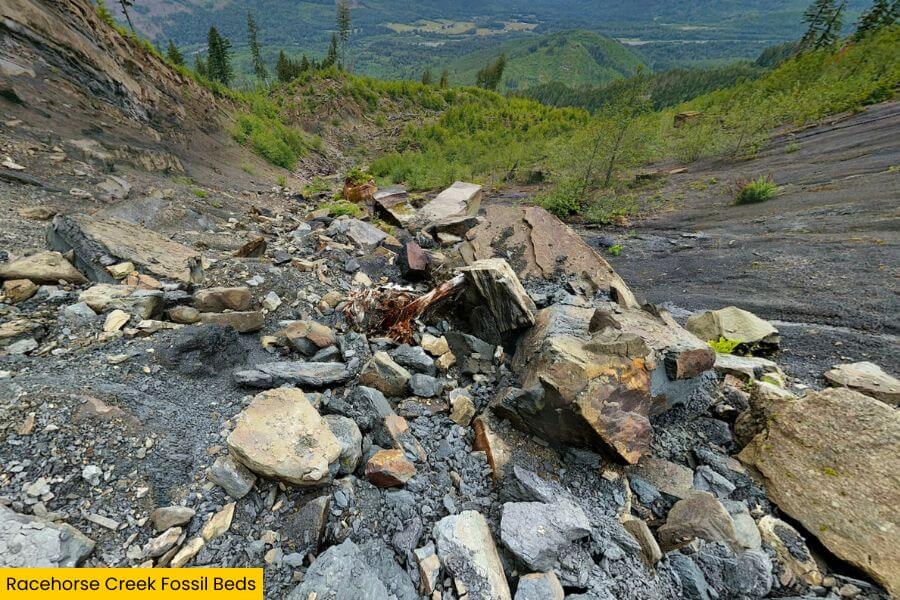
Hidden in the forest near Deming, the Racehorse Creek Fossil Beds show ancient plant life from the Eocene epoch within the Pacific Northwest wilderness.
It features 50-million-year-old plant fossils, including palm fronds, sycamore, and swamp cypress, scattered by a massive landslide.
It’s a choose-your-own-adventure hike with no marked trail, just a short scramble down the creek where fossils pop out of the rock walls.
Just be ready to get a little muddy and keep your eyes peeled so you don’t miss any.
6. Hibulb Cultural Center, Tulalip
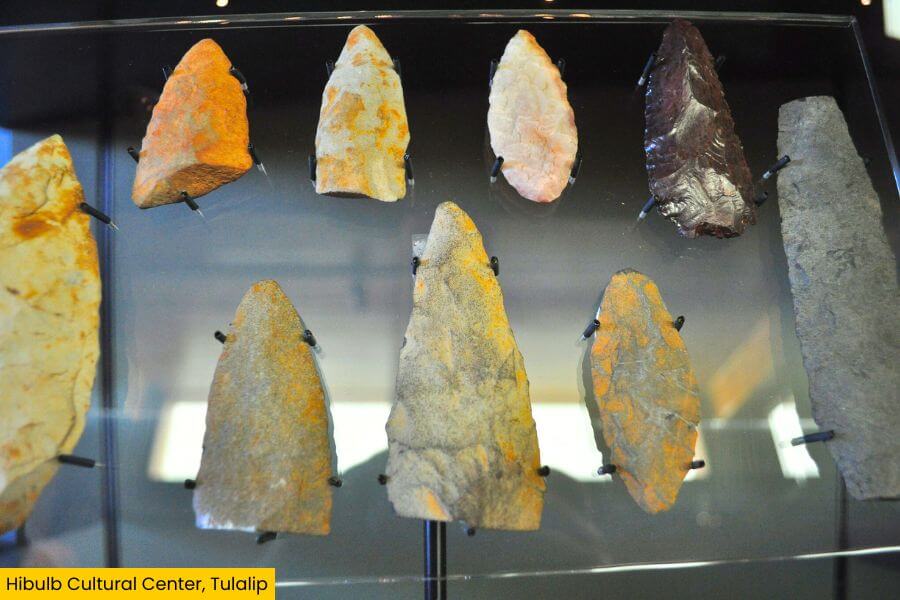
Make your way to the Hibulb Cultural Center in Tulalip, where the story shifts from fossils to the deep history of the Coast Salish people.
This museum is a beautifully designed space filled with interactive exhibits, oral histories, and archaeological artifacts.
You’ll see stone tools, fishing gear, and carvings that tell the story of life in the Puget Sound long before roads, cities, or even written records existed.
It’s a powerful reminder that while dinosaurs and mammoths are long gone, some ancient histories are still very much alive.
7. Burke Museum of Natural History & Culture, Seattle
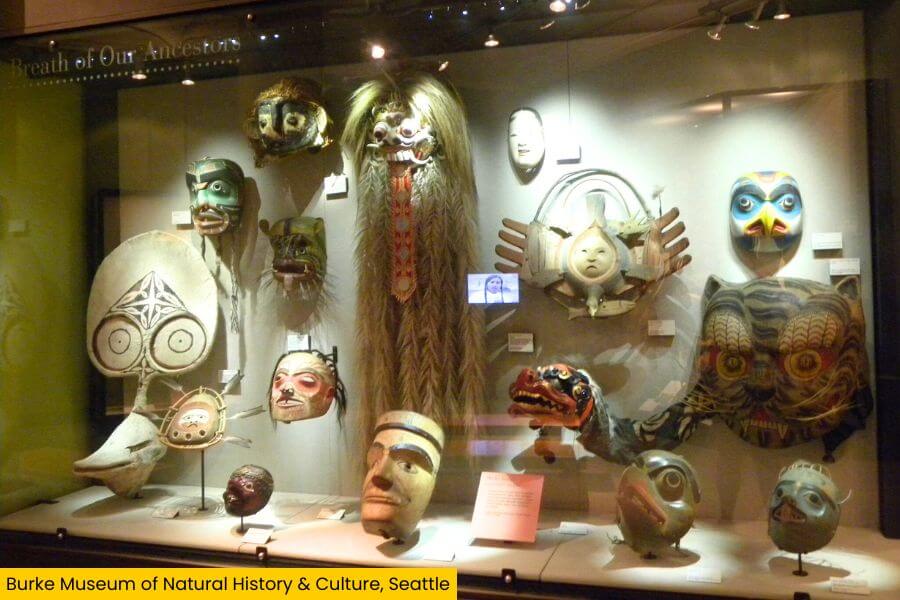
As you head to Seattle, stop at the Burke Museum of Natural History & Culture to see prehistoric creatures, dinosaur bones, and scientists working out in the open.
This place is famous for its massive T. rex skull and its fossil lab where you can watch paleontologists uncover ancient finds in real time.
You’ll also find incredible specimens here, from 27-million-year-old whale skeletons to Ice Age bison and fossils uncovered in eastern Washington’s ancient lakebeds.
It’s part science museum, part behind-the-scenes lab, and 100% awesome for anyone who geeks out over dinosaurs.
8. Makah Cultural and Research Center (MCRC) & Ozette Archaeological Site
Last stop: the Makah Cultural and Research Center (MCRC), which preserves artifacts from the Ozette Native American Village Archaeological Site.
The Ozette Site is where a sudden mudslide buried and naturally preserved a 500-year-old Makah village.
This place is dubbed the “Pompeii of the Pacific Northwest” for its 55,000 uncovered artifacts, from cedar canoes to woven baskets that look brand new.
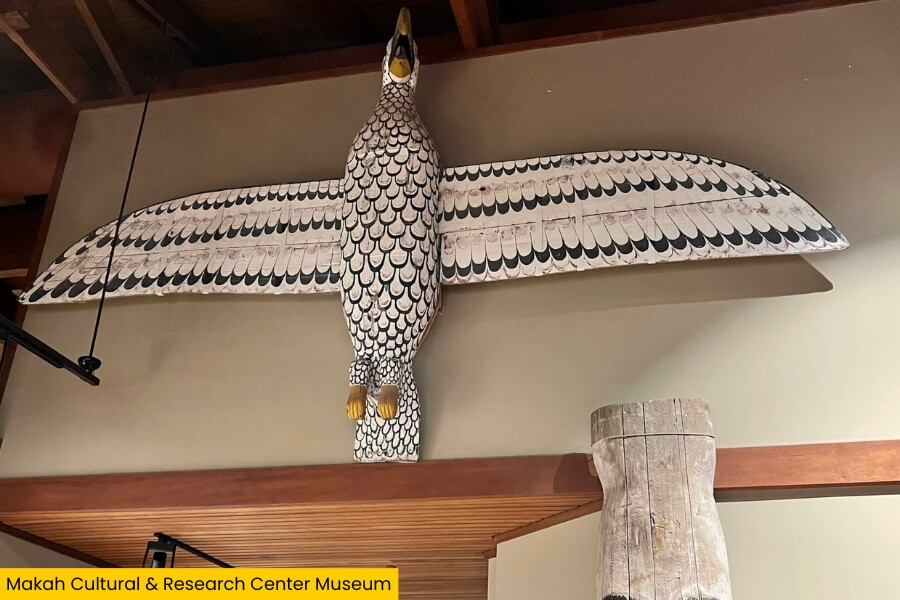
You can’t visit the exact dig site (it was filled in to protect the area), but you can see many of the incredible finds at the Makah Cultural & Research Center at Neah Bay.
It’s a mind-blowing mix of archaeology and living culture that shows just how much history could be lying beneath our feet without us even realizing.
Related Posts

